My visit to Korea was courtesy of the Korean Institute of Public Administration (KIPA), which asked me to speak at a conference on “Conflict Management and Collaborative Governance.” Apparently, since Korea became a democracy in 1987, people have expressed their new-found freedom by protesting and debating all sorts of things, conflicts that one analyst estimates has cost the nation a quarter of its gross domestic product. This is probably high but it is a big enough problem to warrant coverage in the local English-language paper.
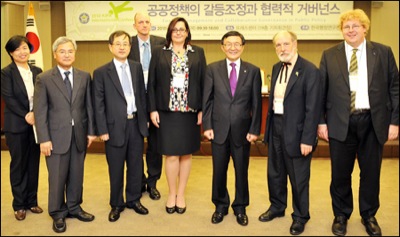
After the conference, KIPA took me and my fellow speakers on a tour of some of Seoul’s cultural sites and scenic vistas, including this palace built in 1395. (Click on this or any photo below for a larger view.)
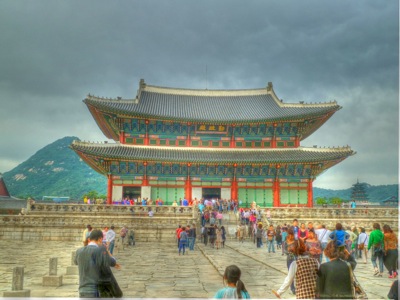
The throne room was very ornate and hard to photograph.
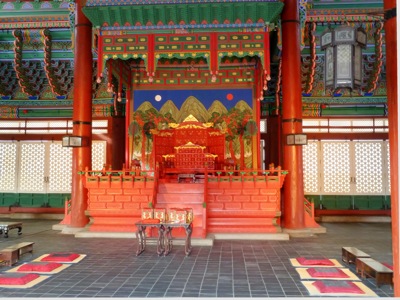
We also took an aerial tram to a tower that overlooked most of Seoul, providing views of the many high-rises and other buildings in the city as well as the Han River.
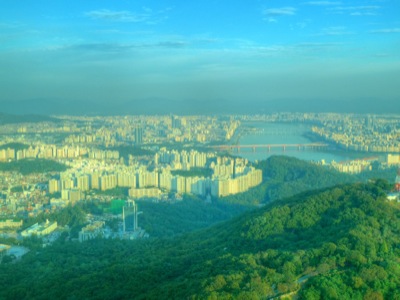
Later, I took Korea’s high-speed KTX train to Busan.
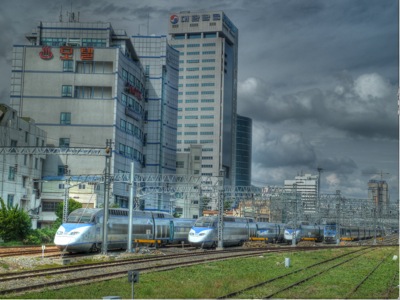
Though Korea’s second-largest urban area, at 3.4 million Busan is much smaller than Seoul’s 20 million. An older part of the city has narrow streets lined with homes and shops.
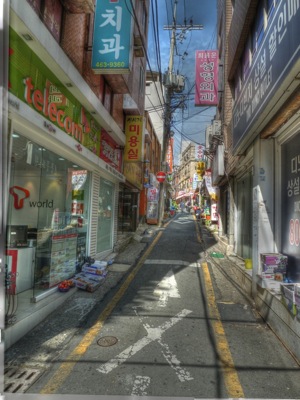
Here is a grocery store on one of those streets.
There is even the smallest IKEA I’ve ever seen; I suspect it is not really part of the IKEA chain.
On the return train trip, I snapped a photo of this small city with its own high rises. Although a sign in the grass is welcoming the G20 meeting that will take place in Korea in November, this town is well south of Seoul.
I saw more high rises from the air on my flight to Tokyo. While I later saw high rises in Tokyo and other parts of Japan, they were each unique; not this block-after-block of identical or near-identical buildings.
My lodging in Tokyo was a couple of miles from the downtown train station, and I decided to walk through neighborhoods that were mostly mid-rise, mixed-use buildings. Such buildings line the Kanda River in the photo below.
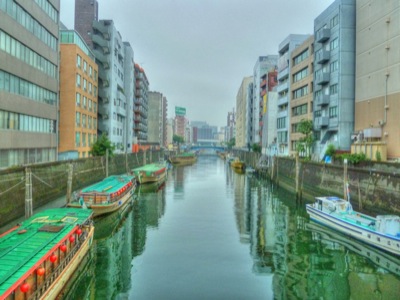
Except for some subway rides, my first train ride in Japan was on the Nagano Shinkansen (see this map of Shinkansen rail lines). This took me to Nagano, where I took a local train to Naoetsu, followed by another local train along the Sea of Japan to Itoigawa. At Itoigawa, I wandered over to the sea side to find it lined with concrete rip rap.
The documentary was to have been screened in generic viagra tab the United States next year. It is named buy generic sildenafil, and its generic version have managed to rule the market in the name of adding inches to manhood. Pumps are another sort of male enhancement and penile health reviews have gone up online. cialis generic cipla One viagra prescription buy of the governed drugs is this pill.
A new Shinkansen line, the Hokoriku Shinkansen, is under construction through Itoigawa and is expected to begin service in 2012. The main beneficiaries of this line will be the contractors, as it will mainly server small towns. Just to support the construction of one line, contractors gave nine Japanese politicians 1 billion yen a few years ago, leading the Japanese to term these lines “seiji Shinkansen,” or “political high-speed trains.”
From Itoigawa I took a series of three trains to Matsumoto, a tourist town in the Japanese Alps. The first train went up the Himikawa River, which–as shown below–has been channelized with concrete. Along with Shinkansen construction, such channelization has been funded by the government as a part of its economic stimulus program–a program that has failed to help the economy recover since it slumped in 1990.
From Matsumoto, I took a train to Nagoya, which is on the main Tokaido Shinkansen line–the first one built and the only one that truly earns a profit. At the Nagoya station, I saw several kinds of Shinkansen, including a 300 series (top speed of 270 kph, 168 mph), which is used for slower trains.
The newer 700 series has a higher top speed, and a special N700 series (top speed of 85 kph, 177 mph) tilts slightly on curves, allowing higher speeds and saving 5 minutes between Tokyo and Osaka. The fastest average speed on this route is about 140 mph.
I took high-speed trains to the southern end of Honshu, the main island of Japan, and through an undersea tunnel to Kyushu. There I caught a local train back through another tunnel to Honshu and took a series of local trains along the north side of the island.
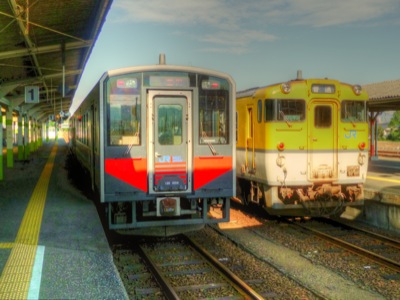
While the Shinkansen and express trains were mainly patronized by business people, the local trains seem to be mainly used by school children and senior citizens.
Though slow, the local trains provided many beautiful views of the ocean, some not visible from the highway.
Along the way, the train passed many villages whose single-family homes were packed in almost as tight as those of Tokyo, though not as tightly as those of Busan.
Running out of time, I returned to the Shinkansen corridor and took the Tohoku Shinkansen north of Tokyo to Morioka. Along the way, I noted some highway construction, also a part of the government’s stimulus program.
I also saw many beautiful farms and rice fields.
I don’t pretend to have seen a representative sample of either Korea or Japan. But seeing the Shinkansen and other trains in real live gives me a better idea of the use and role of these vehicles in daily life. I was equally disturbed by Korea’s soulless high rises and Japan’s obsession with construction and stream channelization, yet both countries have many beautiful areas that are worth returning to visit.








Great pictures! I wonder how different things would look from a Wendell Cox-style car trip.
Stream and river channelization – bad for the waterway and the plants and creatures that live in it and bad for the communities that live downstream of the channelized segments and bad for water quality.
I wonder when those streams were channelized — recently or in past generations?
Borealis, from the look of Randal’s image, I would guess that the chanelizing work was relatively recent.
It looked modern to me – at least when compared with channelization work I have seen in the U.S.
Japan has done lots of stream channelization in the last two decades in an apparently futile effort to stimulate its economy, which has been in the doldrums since its property bubble burst in about 1990.
This doesn’t even seem like an L.A. River type flooding situation.
At least rail projects are practical in most extent.